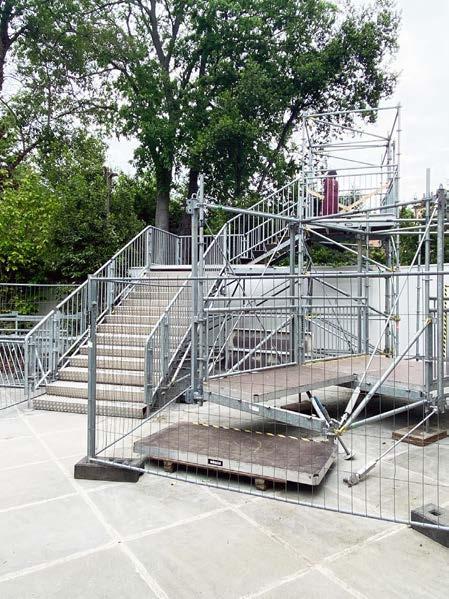
2 minute read
SORTING OUT THE 2023 VENICE ARCHITECTURE BIENNALE
The National Pavilions
Prof. Johannes M. P. Knoops
Advertisement
The 18th International Exposition of Architecture, or more commonly known at the 2023 Venice Architecture Biennale, is a global gathering of epic proportion. 63 National Pavilions, 18 practioners (a term coined by the curator to embrace those other than architects) in the Main Pavilion, and 38 practioners in the Arsenale form the core and foundation of this Biennale. And then on top of that, there are some site-specific works, several official collateral exhibitions, and many more unofficial installations spread throughout the city of Venice. All together they make for a dizzying assembly.
Curator Lesley Lokko titled this year’s Biennale, The Laboratory of the Future. To paraphrase Ms. Lokko, this is a biennale where decolonization and decarbonization are examined while placing the African continent at the center of where the future can be sorted out.
Not to single out this Biennale, but the Curator’s theme has always been left to interpretation and open-ended. I doubt there’s a heavy-handed dictatorial review of the National Pavilions’ proposals. Most pavilions, at least tangentially, connect with the curator’s mission statement, but there are always a few that seem to boggle me.
After letting it all sink in over a few days, I reviewed my notes and tried to sort this out. To make sense of things, I broke it down to identify threads that linked different pavilions… you can say I’ve prepared some parings in order to digest this all. Here are seven pairing for your consideration.
Indigenous peoples and their critical insights


Indigenous peoples and their critical insights
Nordic
The Nordic Pavilion (representing Finland, Norway, and Sweden) hosts a project that started in 2018, titled Girjegumpi. The word is derived from two Northern Sámi words: Girji, meaning book, and Gumpi, a small mobile reindeer herder cabin on sledges, often pulled by a snowmobile. An archive of books focused on the architecture of indigenous peoples form the core of Girjegumpi. These were collected over the course of 15 years by Architect/artist Joar Nango. He is deeply committed to the Sami people, the last indigenous people of Europe. Originally a nomadic race, the Sami have inhabited northern Scandinavia for thousands of years. Nango’s library is a nomadic library. With each transient installation, he collaborates with other artists and crafts people as he draws us into seeing the sound building practices of indigenous peoples.
Peru
Peru created a highly immersive installation exploring the inherent insights of Amazonian communities including the Kichwa, Shawi and Awajún. The installation Walkers in Amazonia explores a certain phenomenon of regional walkers, those who traverse the rough Andean Amazon to observe, learn, share, and celebrate ancestorial knowledge, specifically biocultural insights. The installation acknowledges the shortcomings of modern progress in hopes of creating a new pattern language of mutual planetary nurturing.
Removing walls to build connections
GREAT BRITAIN: Dancing Before the Moon
CATALONIA: Ghost Stories: Carrier Bag Theory of Architecture








